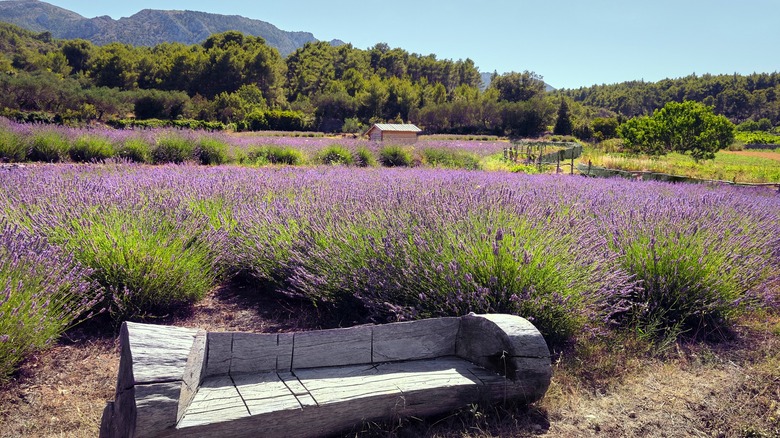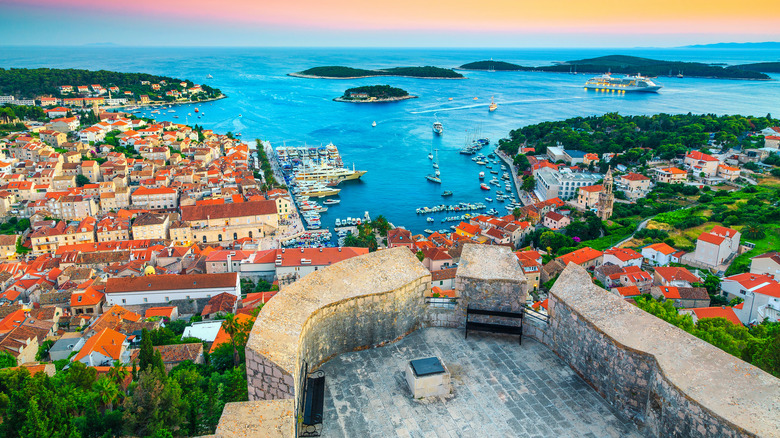Hvar Town and its timeless historical attractions
Moving forward in time, the island became a contested jewel in the Adriatic. The Middle Ages saw Hvar in power struggles between Venice, the Byzantine Empire, and local Croatian rulers. The influence of Venice is particularly evident in the architecture of Hvar Town. The ideal starting point here is Hvar Town’s Main Square or Pjaca. This is one of the largest and most beautiful squares in Croatia, surrounded by historical buildings like St. Stephen’s Cathedral with its elegant bell tower.
Two fortresses define critical moments in Hvar’s history. Overlooking Hvar Town, Fortica (Španjola) offers not only a journey into the island’s defensive history but also stunning panoramic views. It was constructed in the 16th century during Venetian rule. Moving forward a few hundred years is the Napoleon Fortress, built during the French occupation in the early 19th century.
The Hvar Heritage Museum and the Arsenal, one of Europe’s oldest theaters dating back to the 17th century, provide further insights into its past. There are also many religious sites, like the Franciscan Monastery, which houses a collection of artifacts, including a painting of the Last Supper that is over 20 feet wide. The Benedictine Convent is known for its tradition of making agave lace, an art form practiced by the nuns.
Vrboska and Velo Grablje: from a church fortress to the Lavender Festival

The Old Town of Vrboska is another magnificent place on Hvar. Often referred to as “Little Venice,” Vrboska has charming stone bridges and houses reflecting its Venetian heritage, with narrow, cobbled streets and a marvelous blend of Gothic, Renaissance, and Baroque architecture. The Church Fortress of St. Mary of Mercy offers a curious insight into the town’s defensive architecture, fortified in the 16th century to protect the village from persistent Ottoman raids.
The 20th century was no less turbulent, with Hvar witnessing both World Wars and playing a role in Yugoslavia’s maritime history. Post-World War II, Hvar emerged as a popular tourist destination, a trend that has only grown over the decades. The Lavender Festival in Velo Grablje, a village with a history of lavender production dating back to the 20th century, is a fragrant journey into the island’s agricultural past and present. The festival takes place annually in July and invites visitors to learn about lavender harvest, oil production, and other local crafts.
From the relics of ancient Greece to medieval fortresses and from Renaissance art to the echoes of the 20th century, Hvar encapsulates the richness and diversity of European history within a compelling microcosm. All of this, set against the backdrop of this Croatian island’s stunning natural beauty, makes it a fantastic place to explore.

